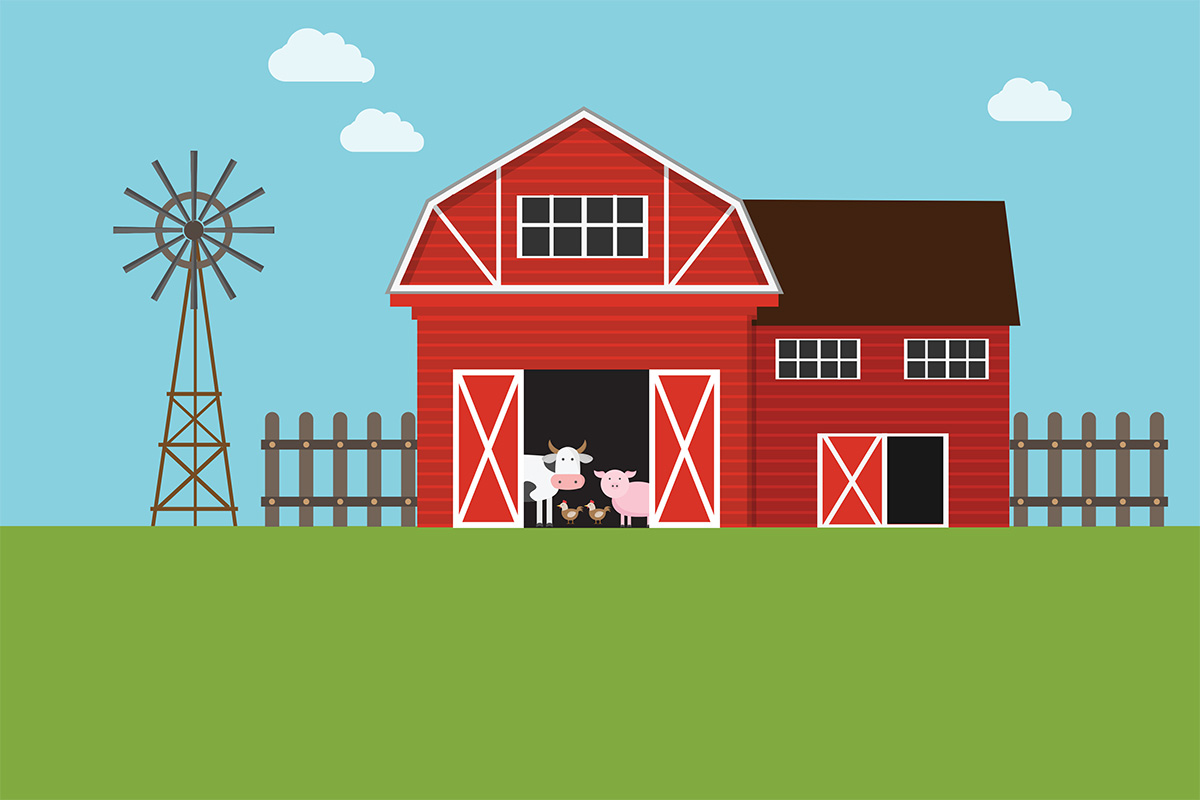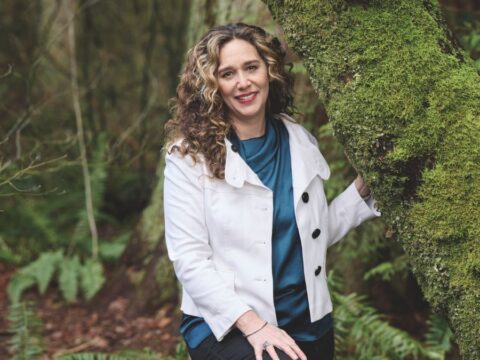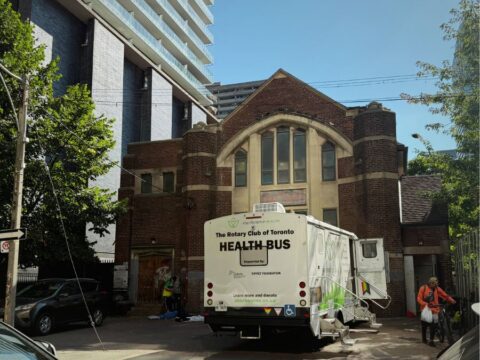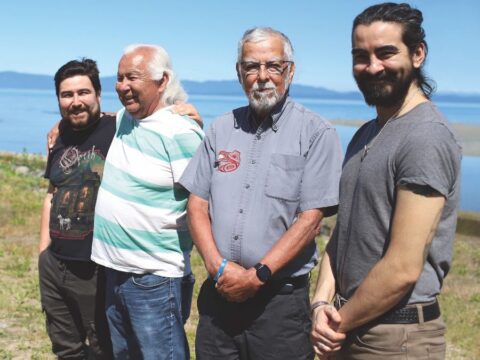On a hot day in June 2015, a member of an animal welfare and vegan advocacy group called Toronto Pig Save offered water through the portholes of a truck trailer carrying hogs to a slaughterhouse in Burlington, Ont. Anita Krajnc was arrested and charged with criminal mischief. Sixteen months later, she was arrested and charged again in connection to an incident involving a truck carrying hogs near the same facility. I thought about this while driving through the central Ontario countryside on the way to visit Paul Karges, a poultry farmer near Listowel, Ont.
I have stayed in touch with my rural roots enough to appreciate how farmers and rural people frequently feel misunderstood. Activists like Krajnc are like a match to a tinderbox for farmers, who believe that too many urban Canadians are reflexively critical of their practices without actually knowing much about what they do — often while continuing to consume the products they produce.
You may unsubscribe from any of our newsletters at any time.
Who can blame them? Farmers feel assaulted from all sides. For example, on a subway ride in Toronto, I looked up to confront a poster sponsored by a vegan organization. It featured side-by-side photos of a kitten and a chick and posed the question, “Why love one and eat the other?” The accompanying text accused farmers of a litany of atrocities, including this: “Each year in Canada, 643 million chickens raised for meat live and die in nightmarish conditions. Crammed by the thousands into filthy windowless sheds, they suffer ammonia burns from their own waste and may be trampled or suffocated from overcrowding.”
Does this stridency raise legitimate issues, or is the goal mainly to make life hard for farmers? Is it a bit of both? Starting with this visit to an old friend from my childhood, I had made up my mind to try to find out what’s really happening down on the farm today.
“Many urban people don’t realize where their food is coming from and what it takes to produce it,” Paul declared, turning the key in his pickup truck before wryly recounting the story of a young man who said in an interview that he didn’t need to know about farming because his food came from Loblaws.
The skittishness of farmers around urbanites was evident even with my friend who, in advance, had warned me. “It will be important to know the context of your visit,” he wrote in an email. “It’s one thing for us as old acquaintances to exchange views on the merits of conventional farming and have me show you our operation. It is another to be the subject of a nationally distributed magazine article that raises issues of animal welfare, environmental impact, etc. If I were to be inserted into any debate on ‘factory farming,’ I would need to proceed with caution. I hope you appreciate my trepidation.” Fair enough.
Paul and I grew up on the same concession road. Our parents were friends; we attended the same Sunday school and went back and forth to one another’s houses for sleepovers. Paul went on to become a poultry farmer with half a dozen barns dotted over 400 hectares of land in southwestern Ontario, while I moved away and have lived in cities for all of my adult life. I needed to reassure him that I remember enough about the complexities of rural life and economy to be fair.
I remember enough to know that farming has always been simultaneously a sentimental and a harsh business. On the farm of my childhood, our animal population was small enough that many of the cows and horses had names. But this didn’t take away from the fact that it was a working farm. The animals might be our friends, but the cows were expected to give milk twice a day and remain pretty much constantly pregnant in order to yield a calf once a year; the horses still had jobs pulling around machinery. The pigs had brief five- to six-month lives before being turned into ham and bacon; the hens laid eggs for about a year before they too went to the butchery. While we loved our animals and believed we treated them well, we had no illusions. (One time, when I was 14 and had a 4-H club calf named Sam, I refused to eat beef for a year following his sale to a packing company at the culmination of the fall fair season. I feared it might be Sam.) In this world, life and death were taken for granted as part of a larger ongoing cycle. While much about farming has changed since I was a child, this much has not.

Paul led me into one of his barns where 9,000 10-day-old chicks cheeped away as they fluttered under warm lights around feed and water stations. They’ll live and grow here for five weeks before being sent away for “processing.” Paul wouldn’t exactly say that his chickens are happy (though later when we stepped into another barn, he shouted out a question about U.S. President Donald Trump, and it elicited a lively reaction from 1,500 turkeys). But he was adamant that his animals are well fed and cared for. This is the ethical bottom line for many farmers, even for the much-maligned factory farm. “What defines it?” Paul asked. “Is it more than a certain number of animals? Even if it is, if the livestock and poultry are being treated properly, so what? There is an assumption that animals are produced on a vast assembly line where nobody cares. In the majority, that’s not the case.”
He continued, “In the odd instance where PETA (People for the Ethical Treatment of Animals) goes in undercover and films somebody abusing something, we are just as upset as anyone. We have codes of practice, and when those are violated it makes us all look bad.” Both food safety and animal care, he stressed, fall under industry, government, and, in some cases, international codes and inspection regimes.
He steered me to the website of the Chicken Farmers of Canada, an Ottawa-based association representing 2,800 Canadian chicken producers. Farmers who belong to the organization must sign on to an animal-care program developed in conjunction with the National Farm Animal Care Council. The code of practice for chicken farmers sets out stringent requirements for everything from the hatching of eggs to how chicks are housed, fed and watered, to how they are readied for transport beyond the farm gate. But as thorough and progressive as these protocols may be, they’re unlikely to win over the kind of people who buy space on subway trains to make their case that raising animals to be eaten by humans is wrong, period.
Another of those subway posters led me to the farm of John and Marie Miller in Collingwood, Ont. The poster charged that “most of Canada’s 13 million cows raised for beef spend the last few months of their short lives on barren, muddy, or dusty feedlots containing up to 40,000 cows and endure branding, castration, and dehorning without any painkillers. To maintain milk production, dairy cows are subjected to a brutal cycle of pregnancy and intensive confinement, often with swollen and infected udders (mastitis), while repeatedly having their calves torn away from them. At 3-5 years of age, dairy cows are labeled ‘spent,’ and sent to slaughter and ground up as hamburger meat. Because their newborn male calves are of no value to the dairy industry, many are killed soon after birth, or are severely confined for their lives before being killed for veal at only a few weeks of age.”
This is not what I encountered at the Miller farm. On 400 picturesque hectares just south of Georgian Bay, the Millers run a modern dairy operation, distributing the milk from their herd of Jerseys — nicknamed the Jersey Girls — to local stores. What is the life of a Jersey Girl? As John took me into his barn, I quickly discerned that these cows are not tied up in the way I remember, passing their winters secured to a single stall. With an average lifespan of approximately eight years, the Millers’ cows roam through a free-stall barn, sleeping on rubber-filled mattresses, able to access a constant buffet of nutrient-enriched corn and hay silage while, every 15 minutes, a cable-driven apparatus passes along the floor to remove their waste. “Special needs” animals — for example, cows about to give birth, as they do every 13.5 months — are stabled in pens next to the main population.
Twice a day, at 6 a.m. and 6 p.m., the cows proceed in groups of 16 to elevated stalls where two workers prep them for the five- to seven-minute process of milking. Betty might be a cow’s name, but Betty also has a number encoded in a transponder around her ankle that alerts a computer that tabulates her milk output as well as current information about her health. If something’s wrong with her, the Millers know about it instantly.
On the Miller farm, and on every other farm I visited, I was struck by the sheer size and sophistication of the operations compared to the farm I grew up on. Aided by just two employees, my old friend Paul will turn out 300,000 chickens and 50,000 turkeys in the course of a year; my dad kept 400 laying hens. The Millers milk 10 times as many cows as my dad did, and run the operation with just 11 employees.

About 100 kilometres southwest of the Miller farm, Adrie Van Stee has taken large-scale, high-tech farming to a new plateau. Two years ago, Van Stee, who has operated his farm since 1993, spent several hundred thousand dollars to construct a spacious barn and install three robotic milkers — stalls that Van Stee’s 135 Holstein cows enter at their leisure (at any time of the day or night), lured by the promise of pelletized treats and the desire to get milked. Once in the stall, a transponder — in this case around the cow’s neck — activates a platform that moves in to wash and prepare the udder and then, guided by lasers, locates and fastens onto the udder to begin the milking process. All the while, a computer is gathering information on the animal’s health and the quantity and quality of its milk.
Van Stee and his son Sander run the operation with the help of one hired hand. They’re delighted with the system, while acknowledging that it isn’t flawless. It can, for example, be an effort to acquaint young cows with the process: sometimes they have to repeatedly physically push an animal into the stall until she gets the hang of it. But their cows are happy, they claim, and it shows in increased production — at least 10 percent, mainly because the cows volunteer for more frequent milkings. And thanks to advances in “sex sorting,” artificially impregnated cows give birth to more heifers — which dairy farmers want — than male calves — which they don’t. While most male calves born on dairy farms are sold to beef farmers, the drop in unwanted male births means fewer animals are killed for veal, a decline reflected in the significantly lower amount of veal produced in Canada over the past 25 years.
Urban vegans who campaign against the exploitation of animals for human purposes not only live in different physical locations than the farmers who raise those animals — they also occupy different moral universes. For vegans, absolutes are possible and indeed imperative. Down on the farm, absolutes are in short supply. Morality means something different, an accommodation between use and care.
A cover story on veganism in this magazine last year prompted a spirited reaction from both sides of the debate. Blain Hjertaas, who calls himself a “regenerative farmer and holistic educator” and hails from Redvers, Sask., took particular exception to the notion that land currently used for raising livestock could be repurposed for food production that wouldn’t involve killing anything. In a long rebuttal, he wrote: “In order for there to be life there has to be death. All living things cause death every day in order to survive. This is a natural thing, and it is how the ecosystem functions. What is waste to one species is fertilizer to the next. Everything is recycled and becomes food for something else. Those who believe they are not killing anything by eating plants are sadly misinformed.”
Apart from fastening “Farmers Feed Cities” stickers to the bumpers of their pickups, farmers have not mounted much of an effort to stake out their rightful place in the middle ground of the animals-and-ethics debate. This is a fact my friend Paul acknowledges when he tells me that though his colleagues lobby politicians with mixed results, efforts to sway the public are an uphill battle. Individually, some farmers understand the need to reach out. Every July, the Millers hold an open house where they welcome more than 3,000 people to tour their barns, learn about their operation and meet “the girls” — to “make sure,” as John put it, “people get their information from somewhere other than Google.”
On the other hand, the organization behind those subway ads, iVegan.ca, raised $40,000 for the 1,000-poster campaign through donations. With more than 1.7 million rides taken on Toronto subways every weekday, iVegan.ca got a lot of bang for its donors’ bucks.
Public education is part of what happens at the Royal Winter Fair, the huge agricultural exposition held each fall in Toronto. Elementary school children line up to watch a cow being milked and a chicken lay an egg. In a perfect world, all farms would look like the Royal, where beasts are treated like princesses, fussed over and shown at their best. Human attendants stand by to clean up after them at the slightest necessity.
The truth about animals and farmers today lies somewhere between the two extremes of the idealized environment at the Royal and the sensational depictions of cruelty plastered on the walls of big-city subway trains. The “Old Macdonald” farm I knew as a child has all but vanished, replaced by an agriculture that is infinitely more specialized, more mechanized and larger. And just as farms have grown large and automated, consumers have become more and more detached from agricultural production. Yet we are not completely absolved of responsibility. The relationship that binds farmers, animals and consumers has always been triangular, and likely will always be so. As consumers, we are within our rights to insist that farmers treat their animals well. By the same token, farmers are entitled to insist that we consumers respect their efforts to do so.













